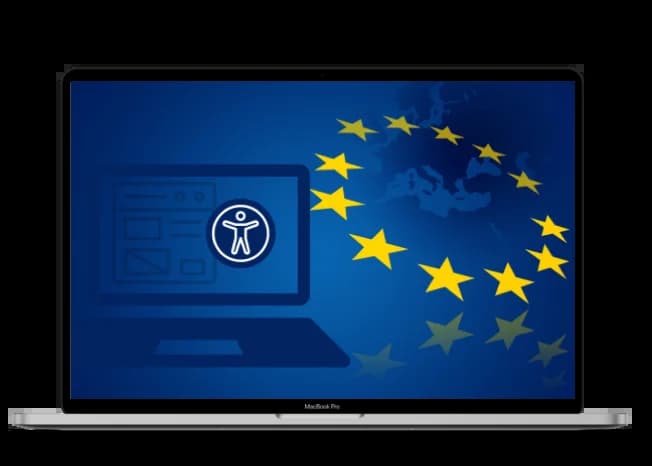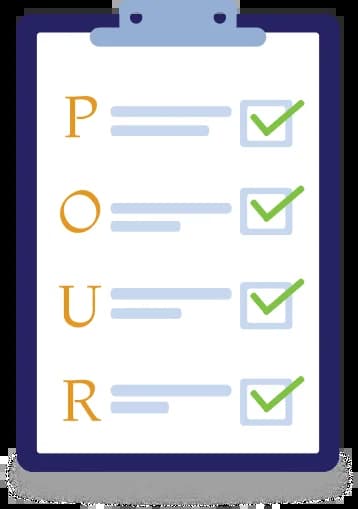EN 301 549 Compliance

WCAG And EN 301 549
By following WCAG guidelines, organizations can ensure that their digital products and services meet the accessibility requirements specified in EN 301 549, thus improving accessibility for people with disabilities and complying with European accessibility regulations WCAG guidelines are based on four principles (often referred to as POUR):
To make content perceivable to users with visual impairments, you can use alternative text for images, provide high-contrast colors, and ensure that all content can be accessed through a keyboard.
To make content operable to users with motor impairments, you can provide keyboard shortcuts, make sure that all controls are large enough to be easily clicked, and avoid the use of timed content.
To make content understandable to users with cognitive impairments, you can use plain language, avoid jargon, and provide clear and concise instructions.
To make content robust to assistive technologies, you can use standards-compliant code, avoid reliance on non-standard features, and make sure that all content is accessible even when it is resized, zoomed in, or otherwise modified.

EN 301 549 also includes provisions for public procurement of accessible ICT products and services, mandating that public sector organizations should give preference to accessible solutions when making procurement decisions. Compliance with EN 301 549 is important for organizations operating within the European Union (EU) or seeking to provide accessible ICT products and services to EU markets. It helps ensure that digital technologies are accessible to everyone, regardless of their disabilities, thereby fostering inclusivity and equal access to information and services.
WCAG Conformance Levels
The Web Content Accessibility Guidelines (WCAG) define three conformance levels to indicate the degree of compliance with the accessibility standards. These conformance levels help organizations communicate the level of accessibility achieved for their web content. The three conformance levels are:
Level A conformance indicates the minimum level of accessibility compliance. Meeting Level A means that the web content satisfies the most basic accessibility requirements. This level focuses on addressing barriers that would prevent some users with disabilities from accessing the content.
Level AA conformance represents a higher level of accessibility compliance. Meeting Level AA means that the web content not only meets Level A requirements but also includes additional guidelines to enhance accessibility. Level AA conformance addresses a broader range of accessibility barriers, making content more usable for a wider range of individuals with disabilities.
Level AAA conformance represents the highest level of accessibility compliance. Meeting Level AAA requires meeting all Level A and Level AA requirements, as well as additional guidelines that provide further enhancements to accessibility. Level AAA conformance addresses a comprehensive set of accessibility barriers and provides the most inclusive experience for users with disabilities. Striving for Level AA conformance is considered a good practice and helps ensure a significantly more accessible experience for users.

How To Know If Your ICT Is EN 301 546 Compliant
To determine if your ICT (Information and Communication Technology) is EN 301 549 compliant, you can follow these steps:
Familiarize yourself with the accessibility requirements outlined in EN 301 549. Review the standard document to gain a comprehensive understanding of the guidelines and provisions it contains.
Assess your ICT products and services against the accessibility requirements specified in EN 301 549. This evaluation should cover various aspects of accessibility, including web content, software applications, electronic documents, multimedia content, and user interfaces.
Since EN 301 549 incorporates WCAG 2.1, refer to the Web Content Accessibility Guidelines for detailed accessibility guidance. Ensure that your ICT aligns with the WCAG 2.1 recommendations, as they form a significant part of EN 301 549 compliance.
Conduct thorough accessibility testing of your ICT products and services. This can involve manual testing by individuals familiar with accessibility requirements, as well as automated testing using specialized tools and software. Test for aspects such as perceivability, operability, understandability, and robustness.
Consider involving accessibility experts or consultants who specialize in evaluating ICT compliance with accessibility standards. They can provide insights, conduct audits, and offer recommendations to ensure compliance with EN 301 549.
Once you have evaluated your ICT and made necessary improvements, verify its conformance with EN 301 549. This verification can be done internally or through external audits. It is advisable to maintain documentation and evidence of your efforts to demonstrate compliance if required.
Keep up-to-date with any updates or amendments to EN 301 549 and related accessibility standards. Regularly review new versions or revisions to ensure ongoing compliance.

Remember, compliance with EN 301 549 is an ongoing process, and accessibility should be considered throughout the development lifecycle of ICT products and services. Continuous monitoring, testing, and improvement are essential to maintain accessibility compliance and provide inclusive experiences for users with disabilities.